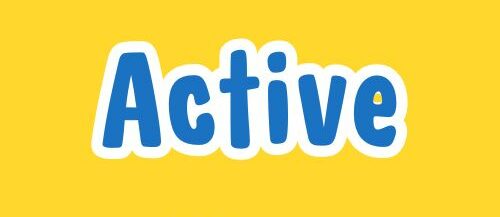Managing finances effectively is a skill that brings stability and peace of mind, but it can be overwhelming if you don’t have a clear strategy. A monthly budget plan is a simple yet powerful tool that can help you gain control over your income, expenses, and savings. By following a structured approach, you can ensure that you’re saving money while also making room for essential expenses and even some personal indulgences. In this article, create monthly budget plan we will walk you through easy steps to create a monthly budget plan that not only works for your lifestyle but also sets you on the path to financial success.
Why You Need a Monthly Budget Plan
The Benefits of Budgeting
A monthly budget is more than just a way to track how much money you’re spending; it’s a way to organize your financial life. A well-crafted budget gives you clarity on where your money goes and helps you make informed decisions about your spending. Some key benefits of budgeting include:
- Financial Awareness: You know exactly how much money is coming in and where it’s going.
- Spending Control: You can prevent unnecessary spending and direct more of your income toward important financial goals.
- Debt Reduction: By keeping track of your finances, you can allocate funds toward paying off debts faster.
- Savings Boost: A budget helps you build an emergency fund and plan for future savings goals, such as retirement or vacations.
- Reduced Stress: Financial planning gives you peace of mind and reduces anxiety over unexpected expenses.
Understanding Your Financial Situation
Before you create a monthly budget, it’s crucial to have a clear picture of your financial situation. This will allow you to set realistic goals and identify areas where you can save money. To get started, you need to gather the following:
- Income: Calculate your total monthly income, including your salary, bonuses, freelance work, or any other sources of income.
- Fixed Expenses: These are regular monthly expenses that remain constant, such as rent or mortgage payments, utilities, car payments, insurance premiums, and internet bills.
- Variable Expenses: These costs can fluctuate from month to month, such as groceries, entertainment, dining out, clothing, and gas.
- Debts: Include any outstanding debts such as student loans, credit card balances, or personal loans.
- Savings: Account for any money you’re putting into savings accounts, investments, or retirement funds.
Set Financial Goals
Now that you have a clear understanding of your financial situation, it’s time to set goals. Financial goals give your budget purpose and help you stay focused. Your goals may be short-term, like saving for a vacation or paying off a credit card, or long-term, like buying a house or retiring early. Here are the key types of financial goals to consider:
Short-Term Goals
- Emergency Fund: Building an emergency fund should be your top priority. Aim to save enough to cover three to six months’ worth of living expenses.
- Debt Payoff: If you have high-interest debt, make it a short-term goal to pay it off as quickly as possible. This will save you money on interest in the long run.
- Vacation Fund: Planning a vacation can be motivating and helps you stay disciplined with your budget.
Long-Term Goals
- Retirement Savings: Contributing to a retirement account should be part of your long-term financial strategy. This could include investing in 401(k), IRA, or other retirement savings plans.
- Home Purchase: If you plan to buy a house, start saving for a down payment early.
- Education Fund: If you have children, you may want to set up a college savings fund.
Track Your Spending
Tracking your spending is one of the most important steps in creating a budget. By monitoring where your money is going each month, you can make informed decisions and cut back on unnecessary expenses. Here’s how you can do it:
Use Budgeting Apps
In today’s digital age, there are many budgeting apps available that can help you track your spending with ease. Some popular apps include:
- Mint: A free app that helps you track spending, create budgets, and monitor your savings goals.
- You Need a Budget (YNAB): This app helps you create a budget by allocating every dollar of your income toward specific goals.
- PocketGuard: This app shows you how much money you have available after accounting for bills, goals, and necessities.
Review Your Bank Statements
If you prefer a more manual approach, you can track your spending by reviewing your monthly bank and credit card statements. Look for patterns in your spending, such as frequent dining out or impulse purchases, and find areas where you can cut back.
Create Spending Categories
Organizing your spending into categories is another effective way to manage your budget. Common categories include:
- Housing: Rent or mortgage, utilities, and home maintenance.
- Transportation: Car payments, gas, public transit, and vehicle maintenance.
- Food: Groceries, dining out, and coffee.
- Entertainment: Subscriptions, streaming services, and outings.
- Debt Repayment: Credit card payments, loans, and other debts.
- Savings: Emergency fund, retirement, and other savings goals.

Cut Back on Expenses
Once you’ve tracked your spending and categorized your expenses, it’s time to identify areas where you can save money. Even small changes can make a big difference over time. Here are some strategies for cutting back on expenses:
Eliminate Unnecessary Subscriptions
Many people have subscriptions they don’t use, such as streaming services, magazines, or gym memberships. Review your subscriptions and cancel any that are no longer necessary.
Reduce Utility Bills
Lowering your utility bills is a simple way to save money each month. Some quick tips include:
- Use energy-efficient appliances.
- Turn off lights and unplug electronics when not in use.
- Lower your thermostat during the winter and raise it in the summer.
- Fix any leaks in your plumbing to save on water bills.
Cut Down on Dining Out
Dining out can be a significant drain on your budget. Consider cooking at home more often and preparing meals in advance to avoid impulse purchases. Meal planning can also help you stick to your grocery budget and reduce food waste.
Shop Smarter
When shopping for groceries or household items, look for sales, use coupons, and buy in bulk to save money. It’s also a good idea to avoid shopping when you’re hungry or in a hurry, as this can lead to impulse purchases.
Save Automatically
Automating your savings is one of the easiest and most effective ways to build wealth over time. When you automate create monthly budget plan your savings, a portion of your income is automatically transferred to a savings account or investment account each month. This ensures that you’re saving money before you have a chance to spend it.
Set Up Direct Deposit
If your employer offers direct deposit, you can allocate a portion of your paycheck to be deposited directly into a savings account. This way, you won’t be tempted to spend that money before you’ve saved it.
Use Round-Up Apps
Round-up apps, such as Acorns or Qapital, automatically round up your purchases to the nearest dollar and invest the difference. This is a simple way to save and invest small amounts of money over time.
Review and Adjust Your Budget
A budget is not set in stone. Your financial situation and priorities may change over time, so it’s important to review your budget regularly and make adjustments as needed.
Set Monthly Check-Ins
Schedule a time at the end of each month to review your budget and see how well you’ve stuck to it. If you find that you’ve gone over budget in certain categories, adjust your spending for the following month. If you’ve managed to save extra money, consider putting it toward a savings goal or paying off debt faster.
Plan for Irregular Expenses
Not all expenses occur on a monthly basis. Some costs, such as car repairs, medical bills, or holiday gifts, may be irregular but can still have a big impact on your budget. To avoid being caught off guard, set aside money each month for these irregular expenses.
You can also read : Top Budgeting Techniques for Maximizing Savings
Conclusion
Creating a monthly budget plan is one of the most effective ways to save money and gain control over your finances. By setting clear financial goals, tracking your spending, cutting back on unnecessary expenses, and automating your savings, create monthly budget plan you can create a budget that works for you and helps you achieve financial success. Remember, budgeting is a continuous process, and the key to success is consistency. Regularly review your budget, make adjustments as needed, and stay committed to your financial goals. With time and discipline, you’ll be on your way to a more secure and prosperous financial future.



